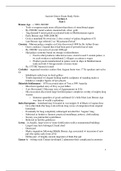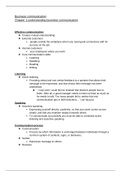Examen
HIST 2100 Ancient Greece Final Exam Study Notes
- Cours
- Établissement
HIST 2100 Ancient Greece & Rome Midterm Exam - focuses on Ancient Greece TA: Richard Aronson Contains key terms & definitions for people/places/events Contains essay questions and answers I passed this course with an A
[Montrer plus]




